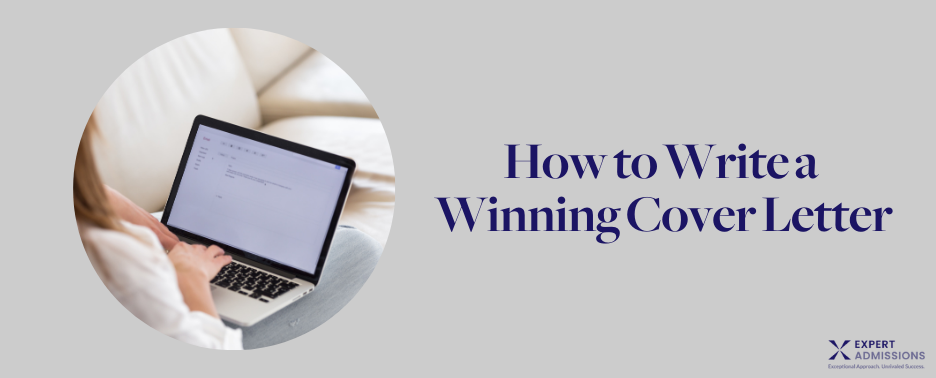
So you’re applying for an internship, job, scholarship, or other opportunity, and the application asks for a cover letter (along with your resume and other materials). What exactly goes into writing a cover letter, how long should it be, and why is it important? Read on for some tips to craft a cover letter that will help you land the internship or job opportunity you’re seeking.
A cover letter is, first and foremost, a space to show your reader who you are. Other materials–such as a resume, transcripts, and letters of recommendation–convey other types of information about you, but a cover letter is often the only document in your application that’s written in your first-person voice.
It needs to be thorough and engaging, speak directly to your goals, and give the sense of a genuine person behind the words. The ultimate aim of a cover letter is to convince your reader that you’re the right person for the opportunity you’re applying for–or at least spark their interest enough to offer you an interview.
A cover letter is also a chance to go into detail about whatever skills and experience aren’t explained elsewhere in your application. In your cover letter, you can narrate significant stories that give the reader insight into your background. If you ended up working as a counselor at the summer camp you attended as a kid, a cover letter is the place to tell that story; if you’re applying to intern at a local maker space because you have ambitions to study 3D printing design in college, you can talk about that vision in your cover letter.
Begin brainstorming your cover letter by taking a close look at the description for the opportunity you’re interested in and noting the skills the position calls for. It’s a good idea to have the job description handy, along with your resume, when you’re generating ideas for your cover letter. Take some time to free-write ideas on paper: what are the untold stories on your resume that motivate you to apply for this opportunity? Consider your academic, extracurricular, and personal interests. What skills or abilities do you possess that will be meaningful for this role? What goals do you have for the future that this opportunity will help you achieve?
It’s fine to think outside the box when you’re generating ideas. Did you learn how to be punctual from working at your uncle’s car-washing business in 9th grade? Did babysitting a younger sibling teach you the value of patience? Does your Chinese-speaking grandfather show you the importance of listening? Any experience that’s been valuable to you is fair game for your cover letter.
Once you have some ideas written down, it’s time to make an outline. You should aim to have your cover letter fill one single-spaced page; three substantial paragraphs is a good goal. Break down your experiences and goals into bullet points among a few paragraphs.
Be sure to cover your past experiences, things you learned from those experiences that are relevant to who you are now, and your future goals. In each paragraph, find ways to connect back to the opportunity you’re applying for, either directly or indirectly. And if you go over your 3-4 paragraph mark when you’re writing, that’s totally fine. You can go back and edit your cover letter so that it’s a single page.
Your contact information should appear clearly at the top of your cover letter. Make sure to begin the letter with a salutation, ideally to the person, department or committee that’s offering the opportunity. Use formal titles (Dr., Ms., Mrs., Professor, etc.) when addressing the letter. End your letter with a formal signature, such as “Sincerely,” and your full name. Cover letter templates are readily available online.
It’s also important to know what not to say in a cover letter. A cover letter is not a place to explain things that have gone wrong, reasons you can’t or didn’t do something, or problems you anticipate if you were to receive the opportunity you’re applying for. If you really feel it’s important to explain something negative about yourself, be concise and brief, and find a way to frame that thing in a positive light.
For example, say you’re applying for an internship at a marine biology lab, but you have a poor grade in one of your science courses. You might write something like, “The struggles I faced in my biology class junior year taught me the value of time management. After receiving a less-than-stellar grade my first semester, I was motivated to turn my attention to my time management skills, and, with the help of my friend Sean, learned to complete all of my labs on time.”
Beyond being qualified, competent, confident, and a good writer, there are some things you can include in your cover letter that will make it stand out from the rest. Vivid first-hand anecdotes and stories of challenges overcome and problems creatively solved are great to include in a cover letter. If you have them, bring in unique stories about your background, circumstances, identity, or passions that make you different.
Above all, your cover letter should communicate a clear sense of who you are and what’s important to you. Those are the elements that will stick with your reader and inspire them to reach out to you.
Leave a Reply